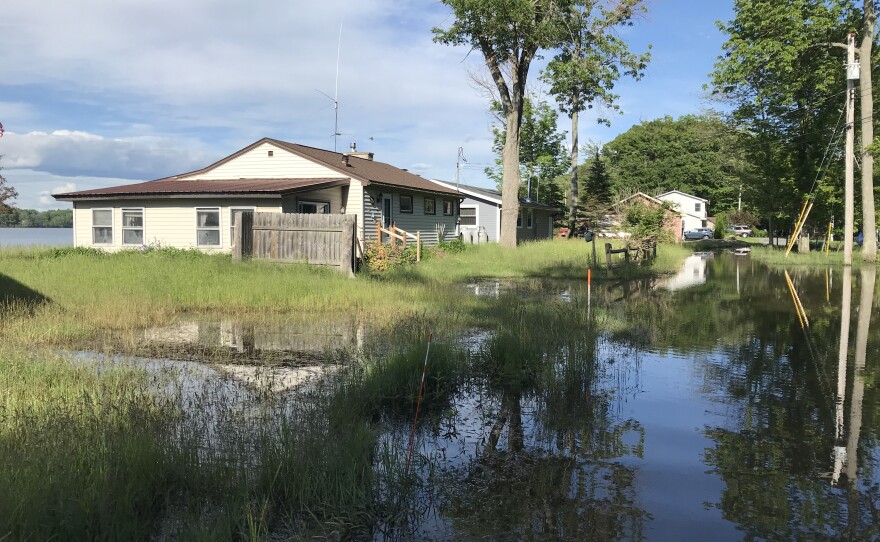Many homeowners along Lake Ontario acknowledge that they took the risk of potential flooding when they built or moved into their properties on the shoreline, but the record-high levels from 2017 and 2019 are not something anyone prepared for. Even those who are trying to adjust to these new levels are struggling to stay above water.
In Pulaski these days, the rules for approaching the homes on Rainbow Shores Road are the same whether you're coming by boat or car, go slow so you don't leave a wake.
Flooding from Lake Ontario in this area has washed out the main access road that leads to the dozens of homes lined along the lake's edge and left a couple feet of standing water in the street, forcing some to leave because emergency vehicles cannot travel here. The people who remained use a logging road to get in and out, which is narrow, uneven, and winding.
"It's affecting everyone's lives," King said. "It's not just about us not being able to have our boat on the water. It's about us not being able to get emergency vehicles down here. It's about people not feeling safe or comfortable coming down here because of the way the roads are."

King says her family has decided to remain here because they don't want to abandon their home, but it's tough. The family moved to this location when she was a child because they wanted to live on the water. These days, they're in it.
Water from the lake is only a few feet from the back end of the house and introducing new species to the patch of land they own across the road. It's now filled with cod, tadpoles, and ducks.
"It's disconcerting," says Maggie King, who has to wear knee-high boots just to take a stroll down the street. "I feel like we're living on an island out here completely surrounded by water and we're at the whim of the wind changing directions. There have been multiple nights where we sat around the kitchen table having discussions about whether we should leave."
Down the road, Ann Robbins says she and her husband did not prepare for flooding like this when they built their home 12 years ago.
"We had worked on prior to building to ensure we were above the high-water mark, that when we put in our crawl space we would be in good condition if anything happened, and we had a surveyor down, our architect came," Robbins said. "So we went through the process of doing this correctly, we thought."

Now, a pump sends a continuous stream of water from their home's crawl space back into the Lake.
Many property owners blame these record water levels from 2017 and 2019 on a new water management plan called Plan 2014, which is used by an international body to regulate Lake Ontario. Others attribute it to unprecedented precipitation in the Great Lakes region, which may or may not be related to climate change. Regardless of who or what's to blame, this is what Gov. Andrew Cuomo says may be the new normal for those living along the shoreline.
Some are trying to adapt. In Greene Point in Sandy Pond, Ron Fisher says his parents spent thousands to literally raise their yard above peak levels from 2017, stacking on new layers to the yard, sidewalk, and driveway. But it was all for naught. The front yard and backyard are submerged once again.

"It's very frustrating," Fisher said. "Everything was sort of built on - that was the highest we ever expected to see. We never expected to be repeating again two years later in so short a time and even exceeding the levels from before."
New York is hoping to implement similar responsive measures to flooding levels on a much larger scale. Cuomo says the state may invest up to $300 million to make shoreline communities more resilient against flooding. But it may be difficult to find people who are willing to contribute to solve a problem that shows no signs of getting any better.
Greene Point Marina owner Cathy Goodnough has spent more than $100,000 on her business to recover from 2017 and prepare for 2019 by raising her shop and beefing up the break wall that sits between the lake and her campers. The water breached both and now she needs an industrial-size pump to shoot the water out of her flooded business.
"We raised the shop, we did the breakwalls, we went over the flood and it wasn't enough. It wasn't enough," Goodnough said. "We're not putting any more money in it until we see what's going to happen."
Goodnough and many others along the lake say the first thing that needs to happen is the repeal of Plan 2014.











